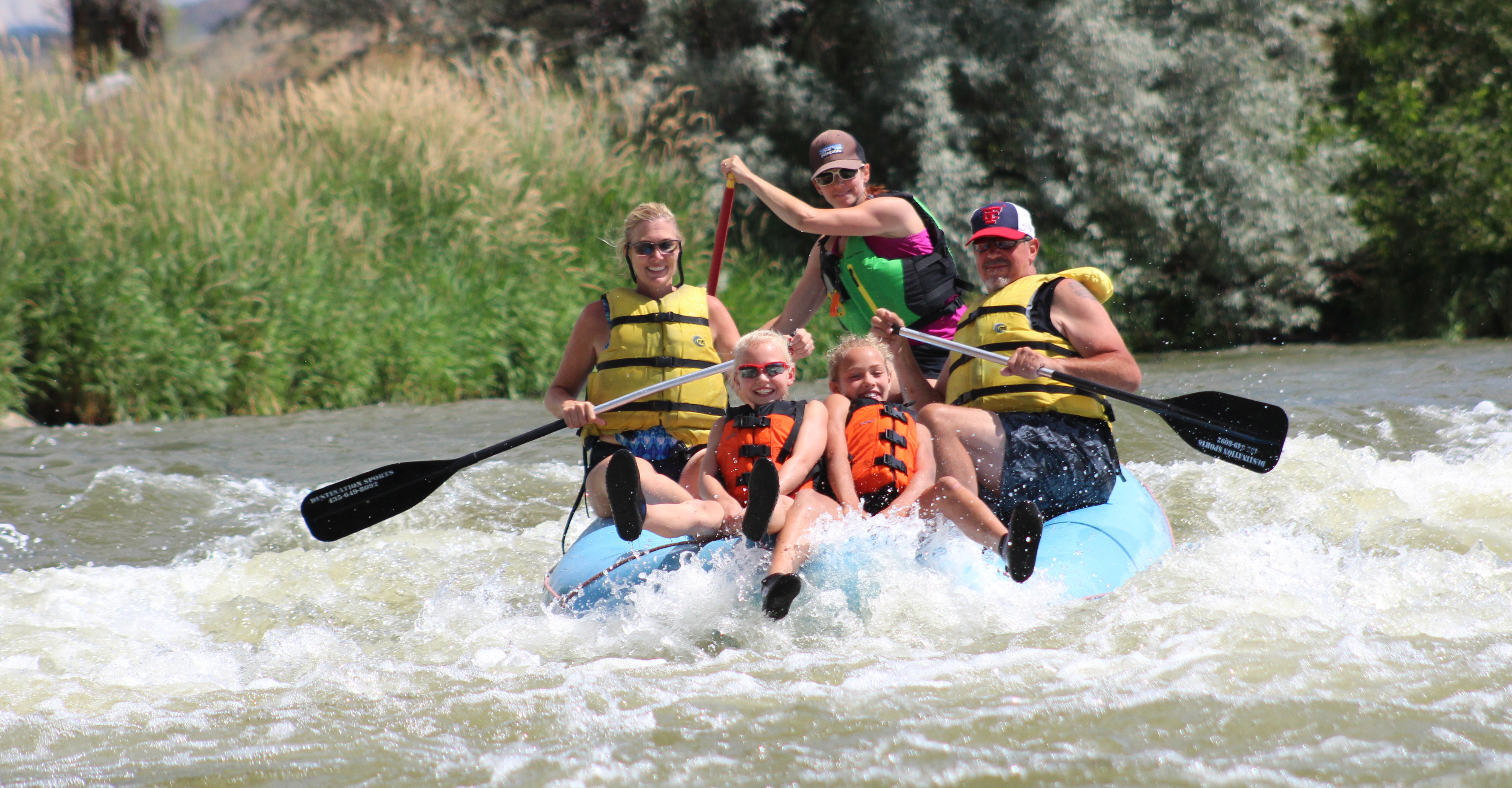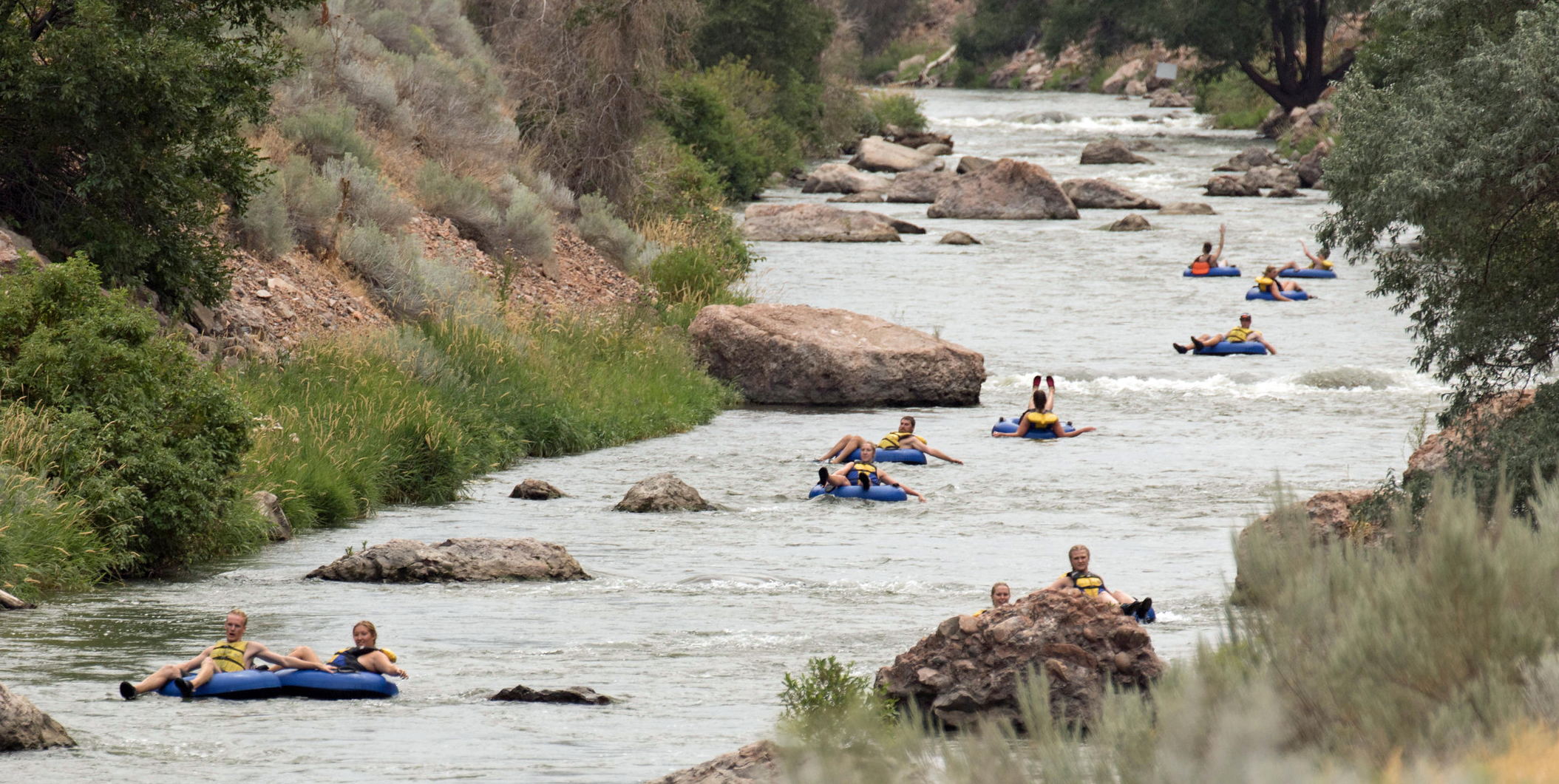How To Prepare for a Successful Float Trip on the Weber River
The “Hen-Tag” stretch of the Weber River is a popular day-trip location for rafting, kayaking, stand-up paddle boarding, and extreme river tubing. It is just a 30 – 60 minute drive from most locations in the Park City, Salt Lake City, and Ogden metro areas, and is ideal for short one-day or half-day trips away from the city. Depending on where you launch from, and how fast the water is running, the trip normally takes between 1.5 – 2.5 hours.
But before you load up your friends, a cooler full of food and drinks, flip-flops, and your pool floaties or cheap “River Tube” that you purchased at a big-box or department store, there are some things you should know.
The Hen-Tag stretch of the “Mighty Weeb” is a class II whitewater river. It is considered extreme for river tubing and is very challenging for inexperienced river runners, especially those on a tube. It is a fun technical practice/play run for kayaking, and it is considered mild for rafting. Guided rafting is the recommended means to float for families with children, and first-timers.
Garbage has become a huge problem on the Weber River, especially with the local weekend crowds of unguided tubers.
The most common garbage we find when doing volunteer river clean-up efforts are listed here in order of most commonly found items listed first:
- Drink cans and bottles (both opened and unopened)
- Flip Flops
- Popped pool toys and cheap tubes, including those labeled “River Tube”
- Sunglasses
- Hats
- Food wrappers and random garbage
- Styrofoam from broken coolers
- Lost paddles
If we don’t work together to fix this problem, we risk losing public access.
This is a real threat.
Do your part in conserving this resource for future public use by following these two simple guidelines, and share this information with your friends and other people you encounter out on the river:
- Follow the commonly respected “Rig to Flip” river running guidelines. That means, plan on flipping and prepare accordingly so that when you do flip, all of your belongings will not become river garbage.
- DO use a sturdy water bottle and clip it to your boat or tube with a self-locking carabiner.
- DO wear river sandals or other shoes that will securely attach to your feet.
- DO secure eyeglasses and hats to your body with retainers, straps, or clips.
- DON’T bring floating coolers or Styrofoam coolers as they will dump all contents into the river when you hit the first rock in the Rock Garden.
- DON’T bring any coolers if you’re tubing. If you want cargo space, learn to kayak or raft, and go in a bigger boat where you can safely secure cargo inside. (Besides, when rafting or kayaking you’d have a comfortable seating position for the entire trip and have lots of control with a paddle.)
- Use a whitewater-rated tube, or better yet, go in an inflatable whitewater raft or inflatable whitewater kayak with a paddle. Whitewater-rated inflatables can better withstand a collision with sharp rocks, tree branches, and other unmarked and dangerous obstacles.
- How can you tell if your boat is strong enough to carry you down the Weber River without popping and leaving you stranded to climb up to the interstate and flag down a ride to the takeout?
- If it has cup holders or a cooler spot, it probably will pop and become river garbage.
- If it looks like Shamu and friends, a pool or lake toy, or an inflatable mattress or party barge, it will probably pop, create river garbage, and leave you stranded.
- Read and follow the manufacturer’s information on recommended use.
- You can rent sturdy whitewater-rated tubes, kayaks, and life jackets from Destination Sports. Or check out any of our guided whitewater rafting, kayaking, SUP, or tubing trips.
- How can you tell if your boat is strong enough to carry you down the Weber River without popping and leaving you stranded to climb up to the interstate and flag down a ride to the takeout?
There are several class II rapids, sometimes escalating to lower class III rapids in certain water levels. There are challenging stretches with large boulders, trees, and branches, very strong currents, low bridges, bridge pillars, and other dangerous and unmarked obstacles. There are sharp bends in the river where the current pushes you into the outer banks and into the trees and rocks. There are also some mellow, straight stretches where you can relax and watch for wildlife.
If this is your first time, go with a guide! Your first time on any river should always be with someone who is experienced on that stretch of river and has been there recently.
In the spring and early summer runoff season, there are additional safety hazards to be aware of. The water coming out of Echo Reservoir is very cold in May and June. Hypothermia is a real thing. Additionally, if water levels are too high, it may not be possible to float under the Croydon Bridge (which presents its own unique hazards at any level). High water levels mean a faster-flowing current, which can create extremely dangerous circumstances. If you are not experienced with any of these factors, then go with a guide who is experienced and knows how to interpret and prepare for the current conditions.
And just one more word of caution. If your friends are trying to talk you into going tubing on the Weber River, and you are inexperienced or are feeling uneasy about it, TRUST YOUR GUT, and opt for a guided rafting trip for your first experience, instead of tubing.
See you on the River!



